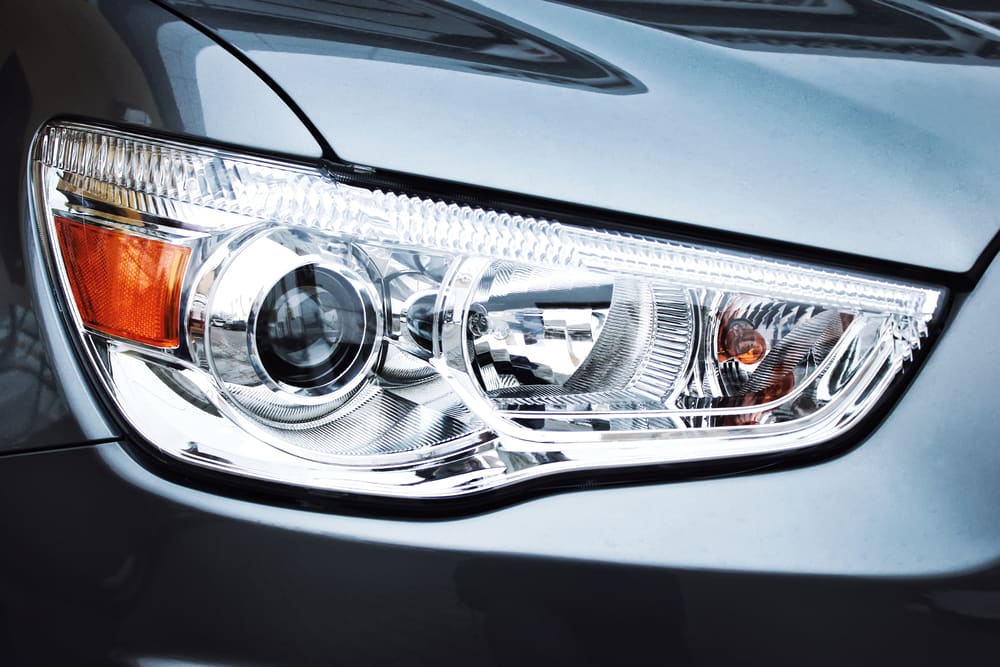Hikari Led Headlight Things To Know Before You Get This
Table of ContentsThe Main Principles Of Hikari Led Headlight Not known Facts About Hikari Led HeadlightSome Ideas on Hikari Led Headlight You Should Know


These are physically and electrically interchangeable with H4 bulbs - hikari led headlight. Comparable optical techniques are used, however with various reflector or lens optics to produce a United States beam pattern rather than a European one. Each system has its advantages and disadvantages. The American system traditionally allowed a greater general quantity of light within the low beam, considering that the whole reflector and lens area is utilized, however at the same time, the American system has actually typically provided much less control over upward light that causes glare, and for that factor has actually been largely rejected outside the US.
The high beam is typically a rough copy of the low beam, moved a little upward and leftward. The European system generally produced low beams consisting of less general light, due to the fact that only 60% of the reflector's surface location is utilized to develop the low beam. However, low beam focus and glare control are much easier to attain.
Complex-reflector innovation in combination with new bulb styles such as H13 is enabling the creation of European-type low and high beam patterns without the use of a Graves Guard, while the 1992 United States approval of the H4 bulb has made traditionally European 60%/ 40% optical area divisions for low and high beam typical in the US - hikari led headlight.
Dual-beam HID headlamps utilizing reflector technology have been used adjustments of both techniques. In this system a filament lies at one focus of an ellipsoidal reflector and has a condenser lens at the front of the lamp. A shade is located at the image aircraft, in between the reflector and lens, and the forecast of the leading edge of this shade offers the low-beam cutoff.
The shade might be reduced by a solenoid activated pivot to offer low beam, and removed from the light course for high beam. Such optics are referred to as BiXenon or BiHalogen projectors. If the cutoff shade is fixed in the light path, separate high-beam lamps are required. The condenser lens might have small fresnel rings or other surface treatments to decrease cutoff sharpness.
Some Of Hikari Led Headlight
Hella presented ellipsoidal optics for acetylene headlamps in 1911, however following the electrification of automobile lighting, this optical technique wasn't used for many decades. The first modern polyellipsoidal (projector) automotive light was the Super-Lite, an auxiliary headlamp produced in a joint endeavor in between Chrysler Corporation and Sylvania and additionally set up in 1969 and 1970 full-size Dodge automobiles.
Projector primary headlamps first appeared in 1981 visit this website on the Audi Quartz, the Quattro-based concept cars and truck created by Pininfarina for Geneva Auto Beauty Salon. [] Established basically all at once in Germany by Hella and Bosch and in France by Cibi, the projector low beam allowed accurate beam focus and a much smaller-diameter optical bundle, though a much deeper one, for any provided beam output (hikari led headlight).
The main downside of this type of headlamp is the need to accommodate the physical depth of the assembly, which may extend far back into the engine compartment. The very first electric headlamp light was the tungsten filament, running in a over here vacuum or inert-gas atmosphere inside the headlamp bulb or sealed beam.

Tungsten-halogen technology (also called "quartz-halogen", "quartz-iodine", "iodine cycle", and so on) increases the effective luminescent effectiveness of a tungsten filament: when running at a higher filament temperature which leads to more lumens output per watt input, a tungsten-halogen light has a a lot longer brightness lifetime than comparable filaments operating without the halogen regeneration cycle.
European-designed halogen headlamp source of lights are normally set up to supply more light at the exact same power usage as their lower-output plain tungsten counterparts. By contrast, lots of US-based styles are set up to minimize or decrease the power usage while keeping light output above the legal minimum requirements; some US tungsten-halogen headlamp lights produce less initial light than their non-halogen counterparts.
There was an improvement in seeing range with US halogen high beams, which were allowed for the very first time to produce 150,000 candela (cd) per vehicle, double the non-halogen limitation of 75,000 cd but still well shy article source of the worldwide European limit of 225,000 cd. After changeable halogen bulbs were allowed in US headlamps in 1983, advancement of United States bulbs continued to favor long bulb life and low power usage, while European designs continued to prioritise optical precision and optimal output.
Hikari Led Headlight - The Facts
It was presented in 1962 by a consortium of European bulb and headlamp makers. This bulb has a single axial filament that consumes 55 watts at 12. 0 volts, and produces 1550 lumens 15% when operated at 13. 2 V. H2 (55 W @ 12. 0 V, 1820 lm @ 13.